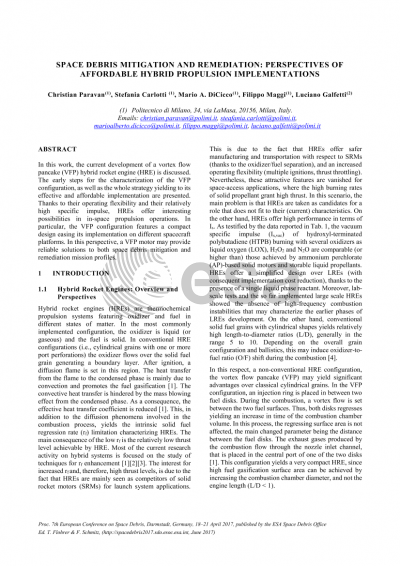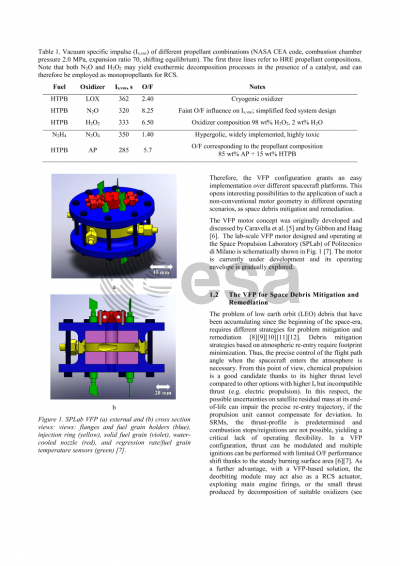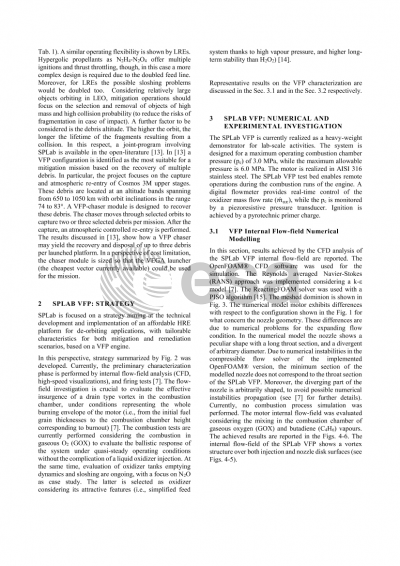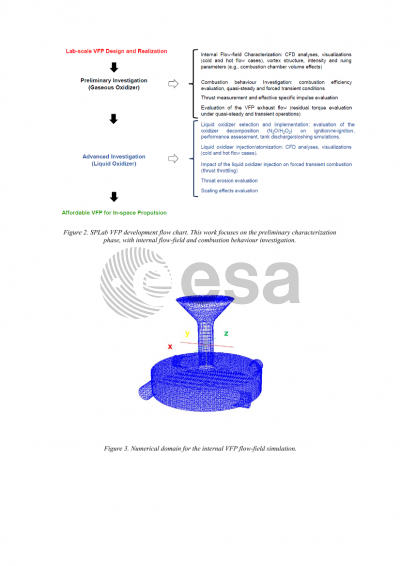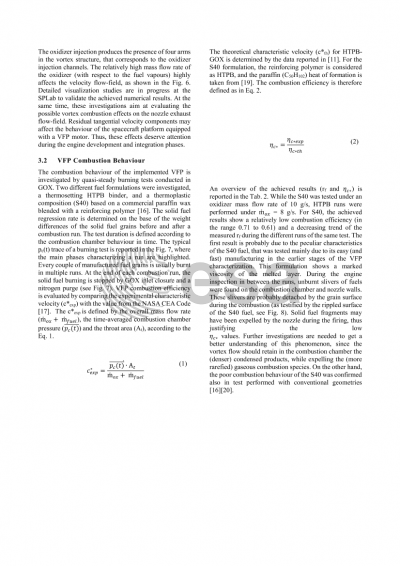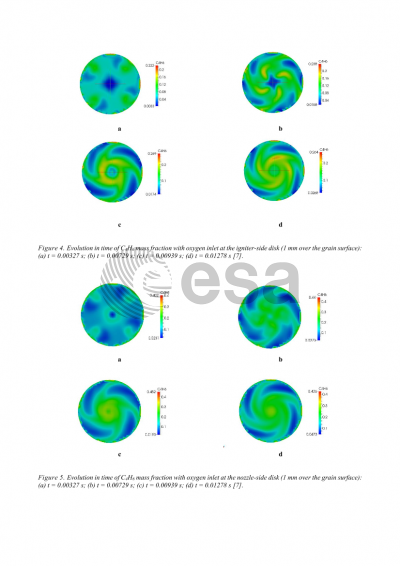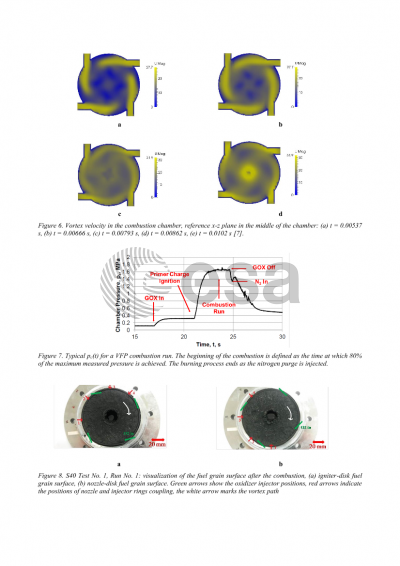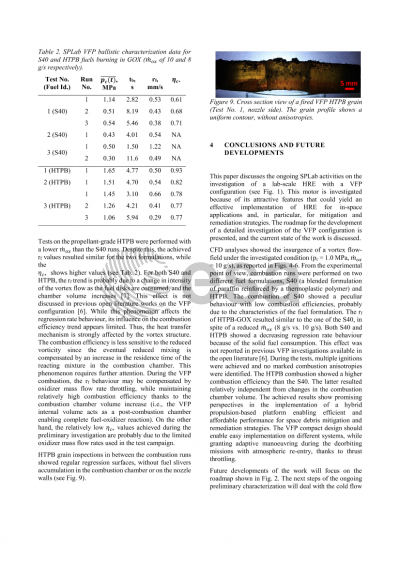Document details

Abstract
This work focuses on the analysis of mitigation and remediation missions for space debris requiring controlled re-entry in the atmosphere. The presented remediation strategies consider the use of a carrier spacecraft capturing the debris and using a non-conventional hybrid rocket engine (HRE), the vortex flow pancake (VFP).
HREs offer attractive features as high specific impulse, reliability, safety and operating flexibility. Considering hydroxyl-terminated polybutadiene (HTPB) as fuel, and oxidizers as liquid oxygen (LOX), N2O and H2O2, the HRE specific impulse performance compete with storable liquid propellants (i.e., N2H4-N2O4) and solid rocket motors based on ammonium perchlorate (AP). Moreover, HRE combinations offer reduced environmental and safety issues: N2H4 and N2O4 are highly toxic, while solid propellants yield HCl-containing exhausts. HREs overcomes the operating flexibility limitations of solid rocket motors: as liquid rocket engines, hybrid systems offer the possibility of multiple ignitions and thrust throttling. The current technology readiness level of HRE is limited by the low regression rate of the solid fuel (in turn yielding low thrust levels), and the poor combustion efficiency. Nevertheless, in-space applications, and deorbiting in particular, could benefit from HRE characteristics. In active deorbiting, relatively low thrust levels are indeed desirable to limit the acceleration of the carrier when transporting the captured debris (i.e., fragmentation risk mitigation). On the other hand, the relatively low combustion efficiency of conventional HREs may be overcome using the VFP configuration, originally proposed in [1]. In the VFP two disks of fuel are separated by a tangential injection ring. The oxidizer injection yields a vortex flow promoting oxidizer and fuel mixing. This grants high system efficiencies (up to 99%, according to [1]). The VFP configuration and compactness grant an easy fit to different spacecraft platforms for debris mitigation/remediation.
The analysed remediation profile is focused on the capture and deorbiting of second stages of the COSMOS 3-M [3]. This is done to take advantage from standardization of components and procedures for the mission. Nevertheless, the final considerations of this analysis are extendable to different cases. The carrier, a VFP-module, docks with multiple debris. The carrier and its payload are then deorbited in the atmosphere. In this scenario, the thrust throttling of HREs provides the possibility of a live control of the re-entry phase, with an active control of the footprint minimization. The non-toxic nature of the HRE propellants reduces the environmental impact in case of fuel-oxidizer residuals presence during the atmospheric phase of the deorbiting.
REFERENCES
[1] Gibbon, D. M., & Haag, G. (2001). Investigation of an Alternative Geometry Hybrid Rocket for Small Spacecraft Orbit Transfer. DTIC Technical Report, AD No. 393398.
[2] Paravan, C., Carlotti, S., Glowacki, J., Maggi, F., & Galfetti, L. (2016). Vortex Combustion in a Lab-Scale Hybrid Rocket Motor. AIAA Paper 2016-4562.
[3] Tadini, P., Tancredi, U., Grassi, M., Anselmo, L., Pardini, C., et al. (2014) Active Debris Multi-Removal Mission Concept Based on Hybrid Propulsion. Acta Astronaut. 103, 26-35.
Preview
